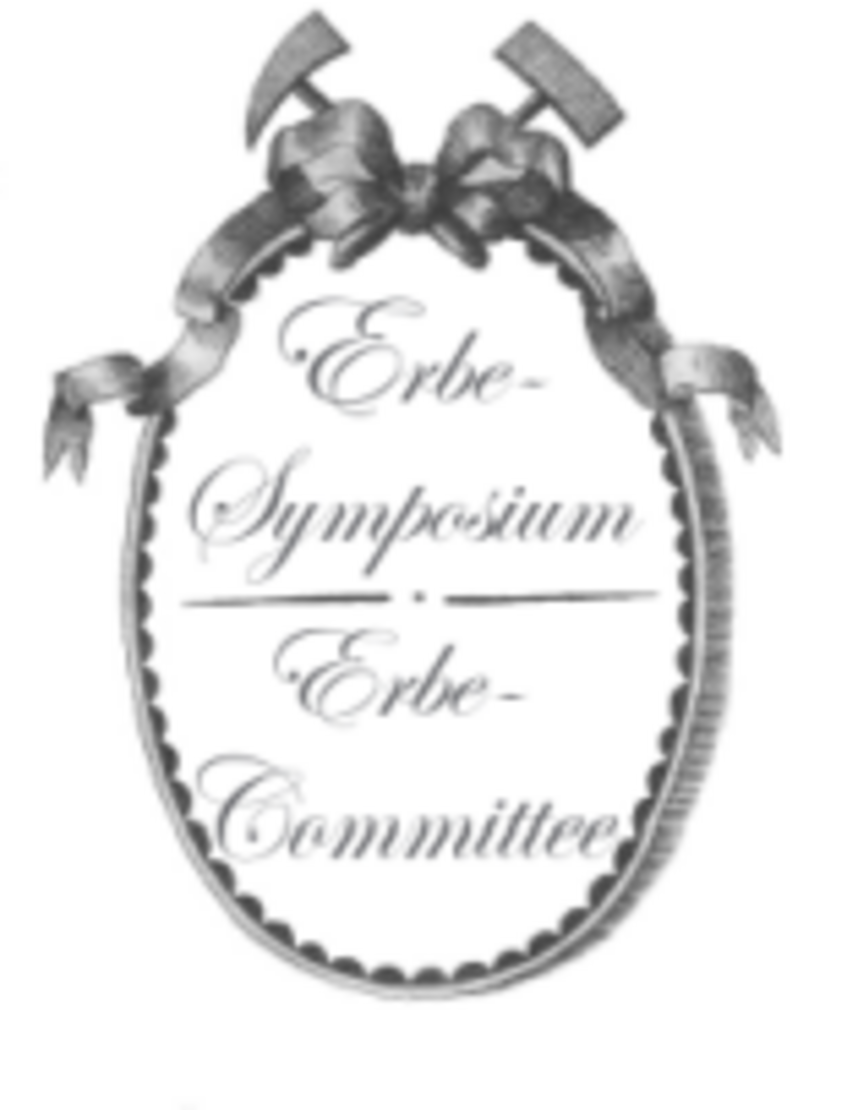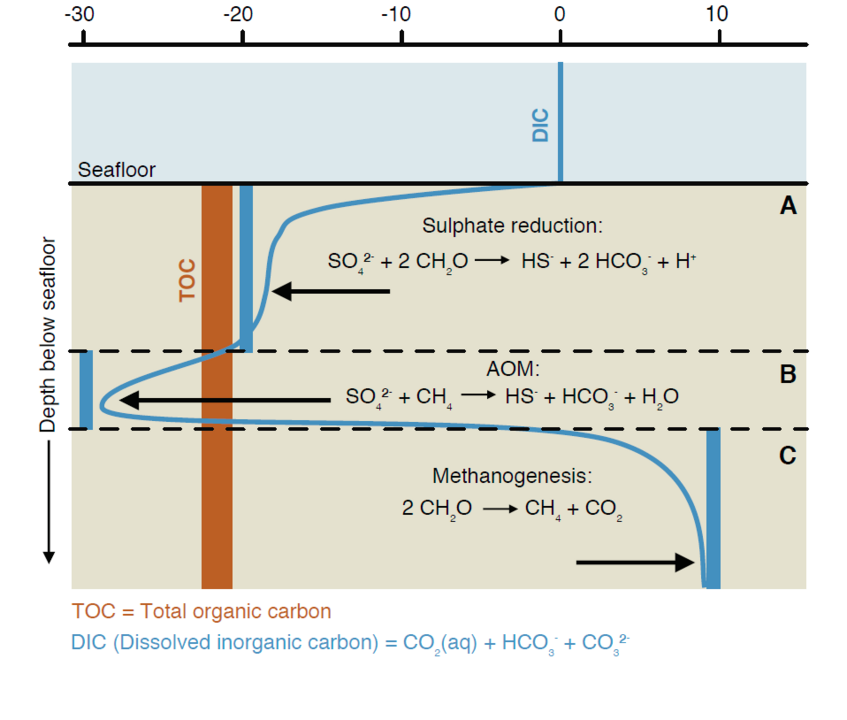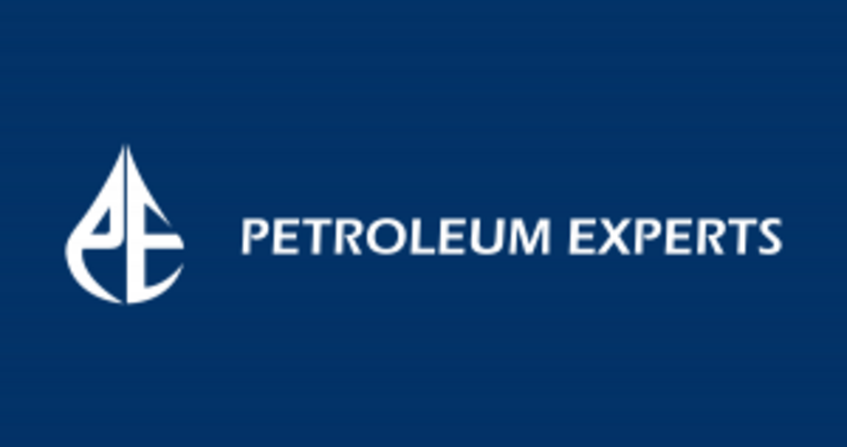News
William Sliter Research Award 2025
Mostafa Mohamed Sayed got the William Sliter Research Award 2025 from the Cushman Foundation for Foraminiferal Research. This award supports graduate student research in Mesozoic and Cenozoic foraminifera and will contribute to his work on Middle–Upper Eocene diversity, paleoenvironments, and paleoclimate in North Egypt, using benthic foraminifera and geochemical data. This work is under supervision of Prof. Michael Wagreich and Prof. Petra Heinz from the University of Vienna.

Two new papers
The race to document the retreat of Alpine glaciers
A team from the University of Vienna have published the first new map of the Taschachferner - a glacier in the Ötztal Alps - for a hundred years.
The team consisted of Dan Le Heron, Paulina Mejías Osorio, Marianne Heninger and our long term collaborator Bethan Davies (Professor of Glaciology at Newcastle University and former Ida Pfeiffer Professor in our faculty).
The new paper in Earth Science, Systems and Society (ES3) documents the evolving geomorphology and sedimentology of the glacier focussing on data acquired during fieldwork in 2023. The evolution of a sandur, debris cover on the glacier, and almost 500 m of retreat in 8 years, is documented.
The paper is gold open access and can be downloaded at: https://www.escubed.org/journals/earth-science-systems-and-society/articles/10.3389/esss.2024.10131/full
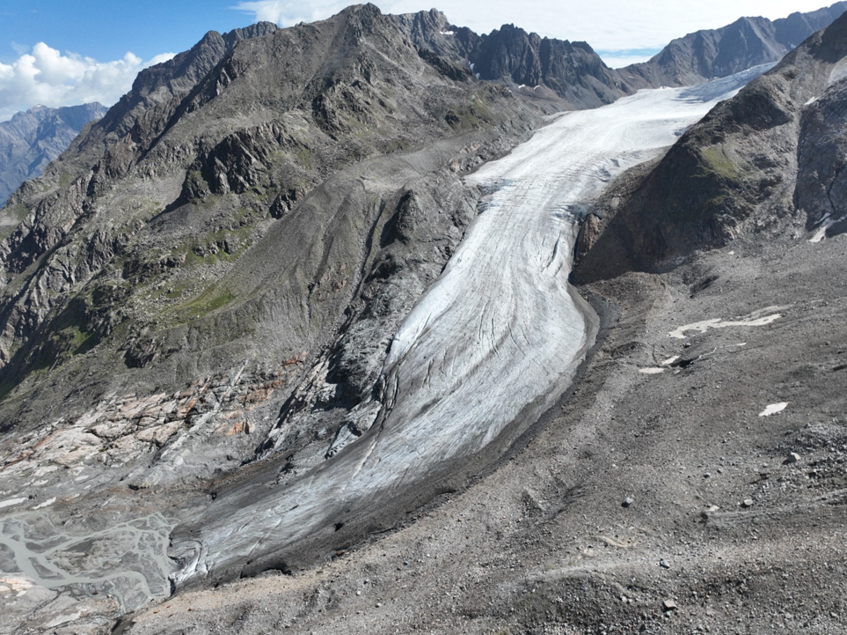
Aerial view of the Taschachferner (© D. Le Heron)
300 million year old fjord in Namibia
To the uninitiated, Namibia is probably the last place on Earth one would think of when it comes to glaciers. Yet in the northern part of the country, a spectacular set of deep valleys occupied by modern (dry) rivers records the past flow direction of 300 million year old glaciers.
A new paper by Dan Le Heron, Ricarda Wohlschlägl, Paulina Mejías Osorio, and Christoph Kettler looks at the evolution of one of these fjords finding evidence for a complex readvance pattern in the sedimentary rocks. Understanding the processes of ice retreat in fjords is vital owing to the role these can play in carbon burial, and more generally in the deep time record can help us get a handle of ice dynamics.
The paper is gold open access and can be accessed here: https://www.lyellcollection.org/doi/full/10.1144/jgs2024-074
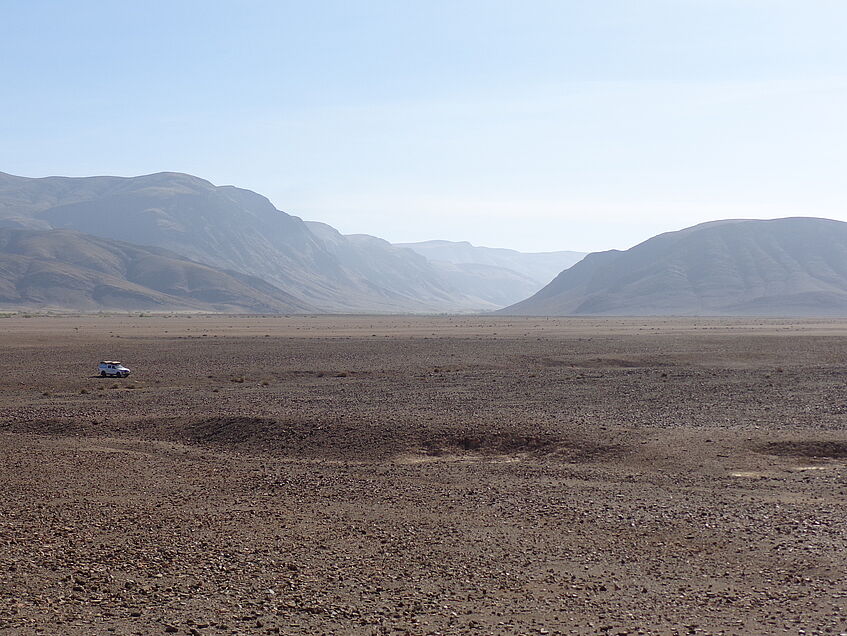
Ground level view of the fjordal landscape in Namibia (© P. Mejías Osorio)
Wolfgang Schollnberger Masters Thesis Prizes (2024)
We recently held a prize giving for the three recipients of the Masters Thesis Prize, generously supported by Wolfgang Schollnberger, in which three excellent talks were giving by the prize winners. The aim of this prize is to acknowledge and celebrate the best Masters theses in Geology in a given year (in this case the 2023-2024 academic year).
The Masters theses were examined by three independent judges and ranked on criteria including originality, research design, presentation and overall quality.
This year, we are delighted to announce the following winners:
1. Sabine Wimmer, for her thesis entitled "A Siderian Snowball Earth? Multiscale and interdisciplinary analyses of the Makganyene Formation, South Africa." (supervised by Dan Le Heron)
2. Jaqueline Krivetz, for her thesis entitled "The Gsengscharte Fault (Gesäuse, Austria): Structural investigations across various scales" (supervised by Bernhard Grasemann)
3. Lino Eggerth, for his thesis entitled "3D-structural modelling approach to explore the link between syn-sedimentary deformation of the Lofermauern and salt tectonics (Wurzeralm)" (supervised by Bernhard Grasemann and Oscar Fernandez Bellon)
The judges praised the consistent quality of the theses this year as a whole. Congratulations to you all!
Science Prize of the Province of Burgenland – Recognition award
On 20 September 2023, Erich Draganits was awarded the "Science Prize of the Province of Burgenland - Recognition award" for the publication "Geoarchaeological remote sensing prospection of Miocene limestone quarries in the hinterland of Roman Carnuntum and Vindobona (Vienna Basin, Austria)". Congratulations!
Science Prize of the Province of Burgenland - Recognition award
https://www.burgenland.at/service/medienservice/aktuelle-meldungen/detail/wissenschaftspreise-des-landes-burgenland-2023-uebergeben
New Awards and Successes in our Department
Congratulations to Marianne Heninger for getting the Judith McKenzie Fieldwork Award specifically aimed at Masters Students from the International Association of Sedimentologists (IAS)!
Congratulations to Paulina Mejias-Osorio for winning a Postgraduate Research Grant from the IAS today! The grant will fund a substantial portion of PhD fieldwork in the Ötztal Alps in August.
Further congratulations are also due for winning a Quaternary Research Association Grant to support fieldwork in Patagonia in the austral summer later this year.
Congratulations to Ricarda Wohlschlägl for 1st place with the Schollnberger Prize!
Award for the best oral presentation at the Forams 2023 conference
Mostafa Mohamed Sayed, MSc, has got the award for the best oral presentation at the Forams 2023 conference.
This International Symposium on Foraminifera is held every four years, this year in Perugia, Italy, from June 26 to June 30, 2023.
The awarded presentation was authored by Mostafa M. Sayed, Petra Heinz, Ibrahim M. Abd El-Gaied and Michael Wagreich on the topic of "Paleoclimate and paleoenvironment reconstructions from middle Eocene successions at Beni-Suef, Egypt: foraminiferal assemblages and geochemical approaches".
The award ceremony was given on June 30, 2023.
Die Geschichte zweier Städte: Von Vindobona zu Wien - von Carnuntum zur Ruinenstätte"
Auf der diesjährigen EGU 2023 Konferenz stellten die Geolog*innen Michael Weißl und Diana Hatzenbühler aus der Arbeitsgruppe um Michael Wagreich an der Universität Wien geo-archäologische und sedimentologische Einblicke in die Stadtentwicklung Vindobonas und Carnuntums vor.
Vindobona und Carnuntum wurden im 1. Jh. n. Chr. als römische Legionslager gegründet. Die benachbarten Siedlungen an den Rändern des Wiener Beckens lagen an den jeweils kürzesten Übergängen der weitläufig mäandrierenden Donau. Obwohl sich die Ausgangsbedingungen der beiden Siedlungen ähnelten, verlief ihre Entwicklung in entgegengesetzte Richtungen:
Carnuntum, dem anfänglich als Provinzhauptstadt eine größere Bedeutung zufiel, konnte sich nicht als Stadt behaupten, wohingegen Vindobona seit dem Mittelalter zur kulturellen Metropole Wien aufgestiegen ist. Als Provinzhauptstadt am Kreuzungspunkt wichtiger Verkehrswege war Carnuntum wiederholt den Angriffen feindlicher Völkerschaften ausgesetzt. Auch das Umland bot dort schlechtere Voraussetzungen für die Wasserversorgung einer Großstadt, anders als in Vindobona - und später in Wien.
Während Carnuntum verlassen wurde, konnte auf dem Platz des Legionslagers von Vindobona ungeachtet zahlreicher Bedrohungen über die Jahrhunderte hinweg eine stark befestigte zentraleuropäische Residenzstadt entstehen.
Als entscheidende Voraussetzung für die Entwicklung zur modernen Metropole mussten die ehemals schützenden Stadtmauern abgetragen werden. Dieser Schritt wurde zu Beginn einer längeren Friedensperiode in der Mitte des 19. Jhs. gesetzt. Weil große Teile der Stadt immer wieder von Hochwässern betroffen waren, wurde im Zuge der Stadterweiterung auch die Donau zunehmend reguliert und den Bedürfnissen der Stadt angepasst.
Neben einer historischen Fragestellung werden im WWTF geförderten Forschungsprojekt "From Romans to the Anthropocene, from Carnuntum to Vienna: An Urban Anthropocene Field Lab" (WWTF ESR20-027) die urbanen Ablagerungen flussabwärts von Wien untersucht. Mit der dynamischen Stadtentwicklung Wiens in der zweiten Hälfte des 19. sowie des 20. Jhs. gehen gleichzeitig sedimentologische Veränderungen in den Ablagerungen der Donau einher. Im Nationalpark Donauauen – zwischen Wien und Carnuntum – werden hierfür aktuell die Hochwassersedimente untersucht, um zu zeigen wie deren Ablagerung von Stadterweiterung und Flussregulierung beeinflusst wird.
Pressemeldungen:
- Warum Vindobona zur Weltstadt Wien wurde und Carnuntum zur Ruine - science.apa.at
- Warum Vindobona zur Weltstadt wurde - wien.ORF.at
- Warum sich Vindobona halten konnte und Carnuntum nicht - MeinBezirk.at
160 Jahre Geologisches Institut der Universität Wien (1862 - 2022)
60 Jahre Geologisches Archiv der Universität Wien (1962 - 2022)
Am Donnerstag, dem 24. November 2022, fand eine Festveranstaltung zum Jubiläum 160 Jahre Geologisches Institut und 60 Jahre Geologisches Archiv statt.
Simulation of paleoclimate cycles in the Late Triassic Greenhouse
Jan Landwehrs, Benjamin Sames and Michael Wagreich from the Department of Geology together with colleagues from the Potsdam Institute for Climate Research, the University of Southampton and the Columbia University New York, recently published a paper on paleoclimate modelling “Modes of Pangean lake level cyclicity driven by astronomical climate pacing modulated by continental position and pCO2” in the high-impact factor journal PNAS (Proceedings of the National Academy of Sciences, https://doi.org/10.1073/pnas.2203818119).
Reconstructing climates of the past allows a view into the greenhouse world future of our planet in the Anthropocene. The hydrologic cycle in the geologic past is important to understand paleoclimate change in greenhouse climate. Orbital forcing is widely accepted as a driver of hydrologic cycles, however, the mechanisms of astronomical forcing in paleoclimate and hydrological cycles are poorly understood.
Jan Landwehrs applied a comprehensive Earth System Model to simulate the paleoclimate forcings considering Milankovitch orbital cycles, pCO², and paleogeography in the Late Triassic, using lake sediment cycles in the Newark-Hartford Basin (USA).
Reviewers judged the paper as "a milestone for the understanding of the lake level cyclicity" in the Late Triassic greenhouse. Jan Landwehrs finished his PhD project successfully and looks into a future Post-Doc position at the AWI Potsdam, where he will be doing climate modelling for Arctic regions.

Left: Simulated precipitation (green shading) and temperature (colored contour lines) for Pangea with the Newark-Hartford-Basin (black circle). Right: DEM of the investigated area including visible sediment cycles (© J. Landwehrs, P. Olsen; taken from publication).
Guest Professor Eun Young Lee
Guest Professor Eun Young Lee from South Korea gave a presentation in the Earth Science Colloquium on the southwestern Australian margin and East Gondwana breakup based on her investigations during two Ocean Drilling Projects.
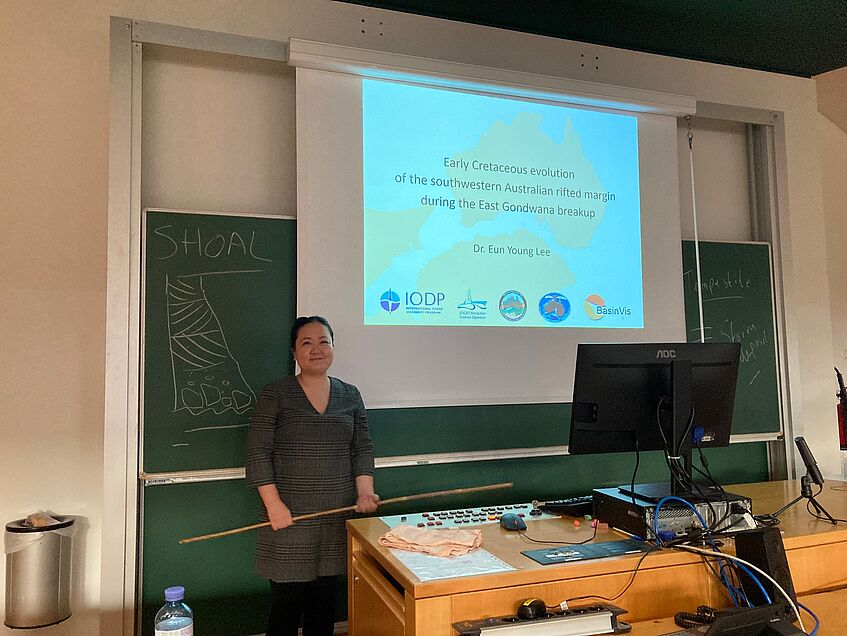
(© M. Wagreich)
New Ida Pfeiffer Professor
We are delighted to host Dr Bethan Davies, who recently moved from Royal Holloway University of London to Newcastle University, to our faculty and department as the 2022 Ida Pfeiffer Professor.
Bethan is a world aspect on glaciers, glacial geomorphology, and glaciation in general. Having just arrived in Vienna on the back of an action packed year (fieldwork already completed in 2022 in Patagonia, Alaska and Svalbard!) Bethan will offer a course entitled Glaciers and Glaciation to Masters and PhD students (https://ufind.univie.ac.at/en/course.html?lv=280098&semester=2022W).
We look forward to learning from her in the coming months. Welcome to Vienna!
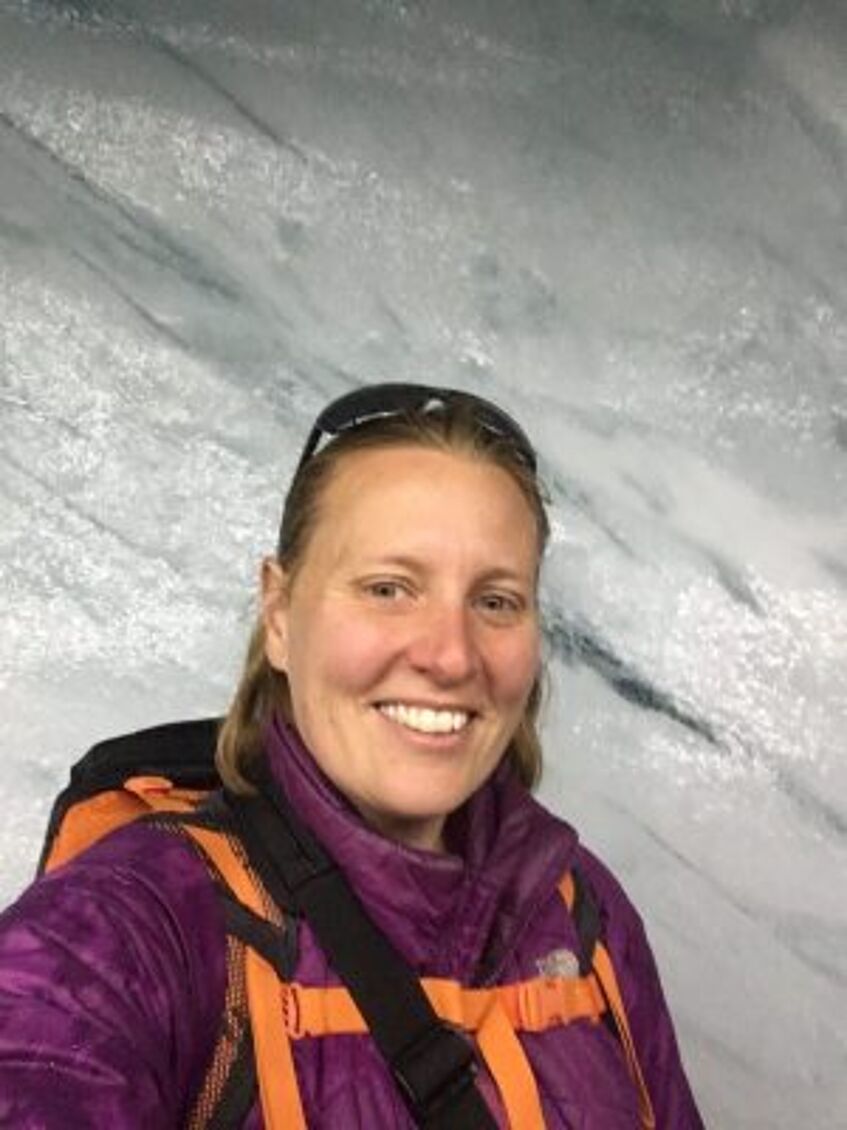
Best poster award for Christoph Kettler at PANGEO..... and to pastures new!
Christoph Kettler was rewarded with a Best Poster Prize at the bi-annual PANGEO conference in Leoben for his exciting and novel poster entitled "Who's Who of the Glacial Forefield", making use of 3D glasses to visualise photogrammetric results.
The poster focussed on a series of complex glacial landforms in front of the Gepatschferner in Tirol, as part of his ongoing PhD work. Christoph has secured a highly competitive mapping position at the Geological Survey (soon to become GeoSphere Austria), but will complete his PhD part time, continuing to work closely with our group on new projects.
We will miss him greatly day to day, but it is a terrific opportunity and we wish him the best of luck for the future!
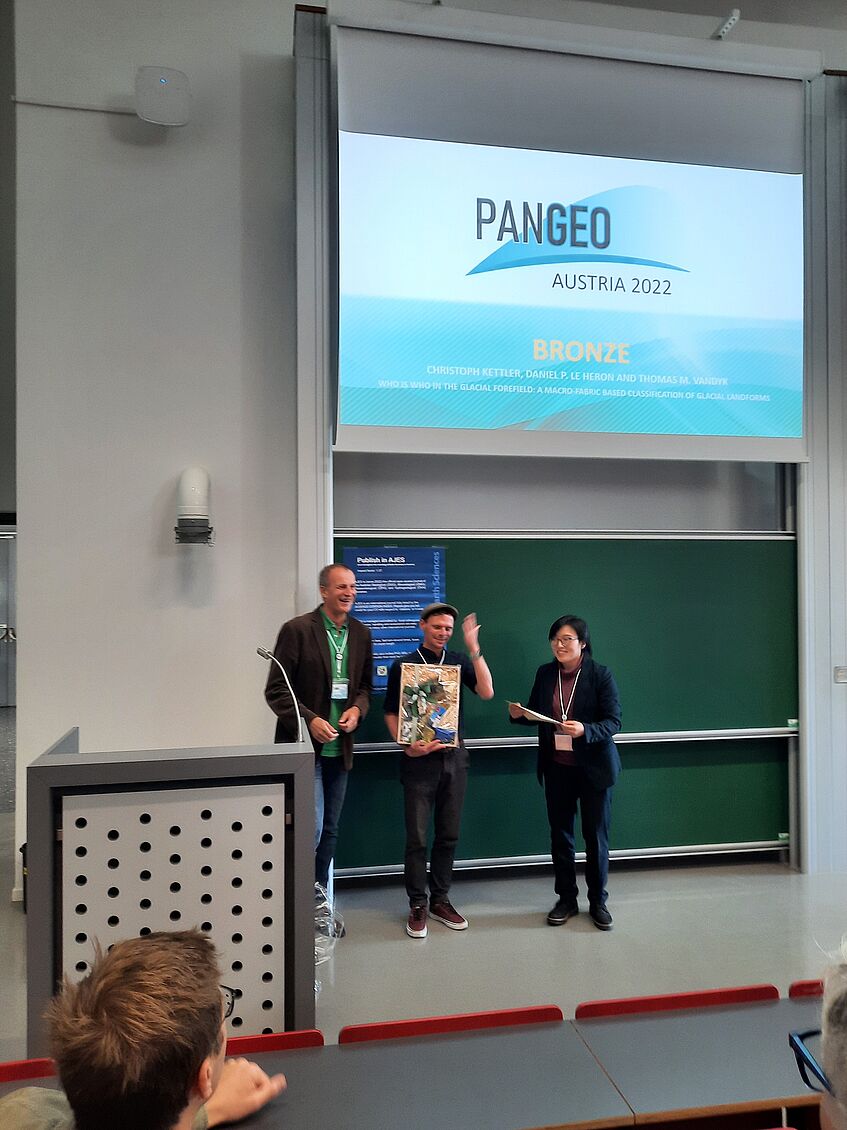
(© D. Le Heron)
Geological Society of London
Dan Le Heron has been elected to the Council of the Geological Society of London, which he has been a member of for more than 20 years, and from next year will be Chair of Publications, responsible for oversight of journals and book publications.
This is an unpaid (honoury) position and an exciting time for publications, particularly with transformative change in open access underway.
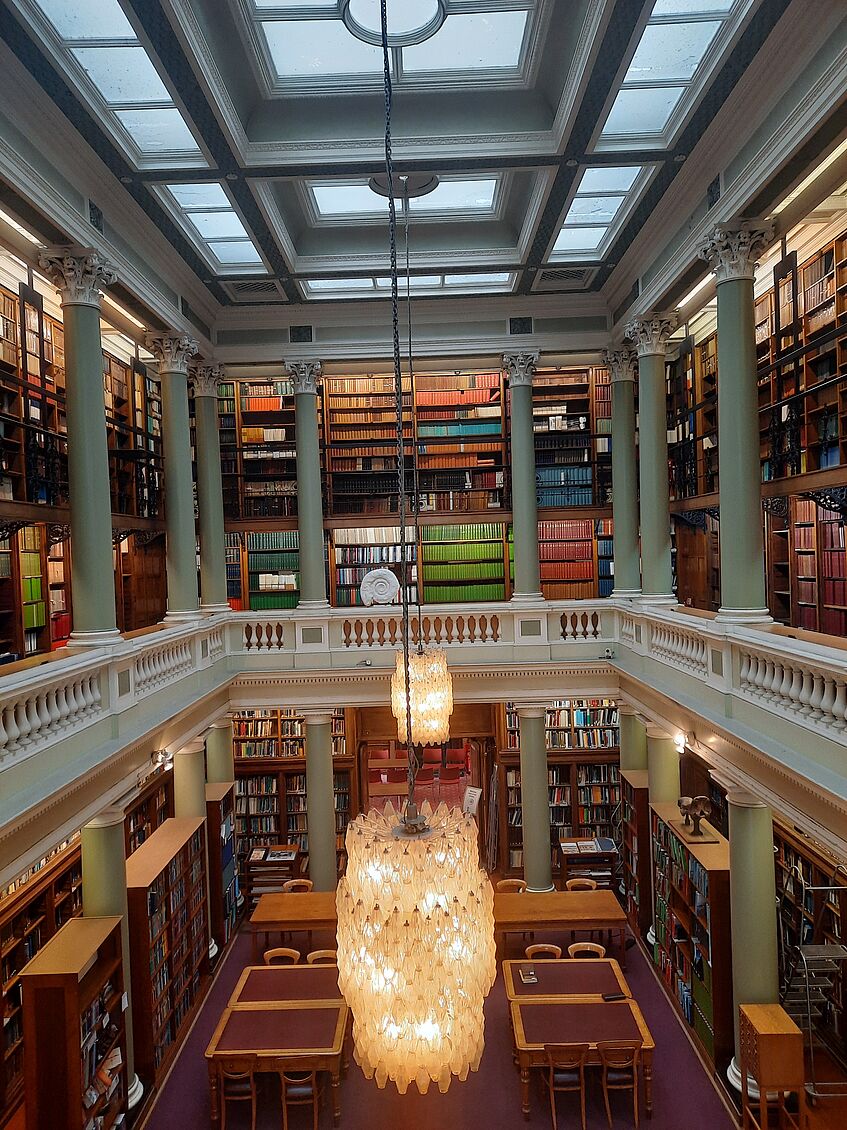
(© D. Le Heron)
Wolfgang Schollnberger Master Thesis Prize 2021
Wolfgang Schollnberger Master Thesis Prize has been awarded to the three best master theses from the challenging year 2021 at the Department of Geology.
The newly introduced Wolfgang Schollnberger Master Thesis Prize was donated for the best Master theses that were successfully defended during the year 2021, which was characterized by distance learning and online exams.
The department is honoured to receive a generous financial gift from Wolfgang Schollnberger, Alumnus of the University of Vienna.
The first place, 1000 Euro in prize-money, was awarded to Stefanie Koppensteiner.
The second place, 500 Euro in prize-money, was awarded to Gerald Schuberth-Hlavač.
The third place, 250 Euro in prize-money, was awarded to Reinhard Gerstner.
AAPG Foundation Grants-in-Aid Award 2022 for Fatemeh Nazari

Fatemeh Nazari Vanani, a PhD student supervised by Prof. Bernhard Grasemann, Dr. Oscar Fernandez and Dr. Martin Schöpfer, has been selected to receive a $3,000 USD grant from the 2022 American Association of Petroleum Geologists Foundation Grant-in-Aid Program.
This grant will be used to sample fracture data from outcrops in the Sarsina area in Italy to characterize fracture properties and investigate sampling representativity in naturally fractured rocks using DFN modelling and statistical data analysis.
15. ERBE-Symposium 2021
Das Organisationsteam des 15. ERBE-Symposiums 2021 (13. bis 19. Juni 2021 in Eggenburg), Margret HAMILTON und Christoph HAUSER, hat für die erfolgreiche Organisation eines internationalen Symposiums zu Kulturerbe in Geowissenschaften, Bergbau und Metallurgie den Wissenschaftspreis 2021 des Landes Niederösterreich erhalten.
Auf diesem geohistorischen Symposium hat Margret Hamilton gemeinsam mit Studierenden aus ihrer Vorlesung Forschungsergebnisse an geowissenschaftlichen Objekten und Dokumenten aus dem Geologischen Archiv der Universität Wien präsentiert.
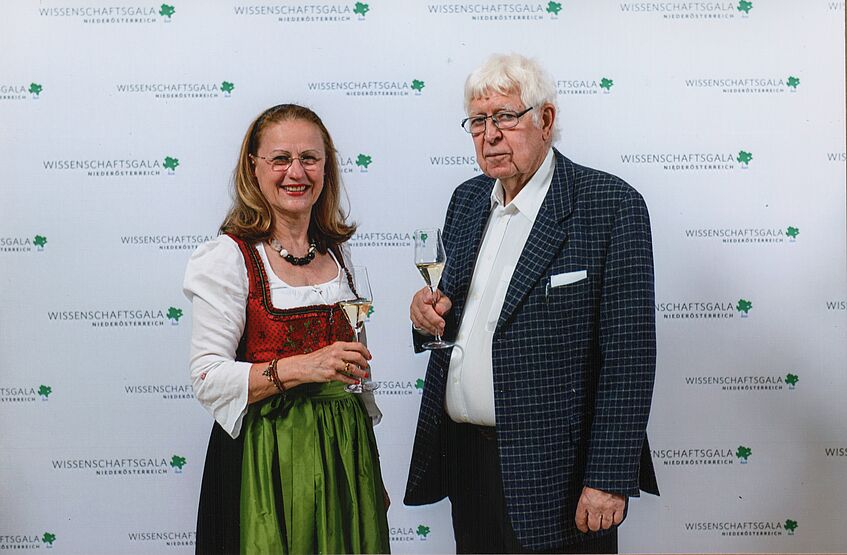
Margret Hamilton (li.) und Christoph Hauser (re.) (© priv.)
Geohistorical research based on original documents in the Geological Archive of the University of Vienna
Hamilton, M., Nagl, P., Heninger, M., Herzog, T., Oppenauer, L., Pirkner, W., Schweigl, L., Steckholzer, G. & Steinfeld, A., 2021, Proceedings: 15th International ERBE-Symposium : cultural heritage in geosiences, mining and metallurgy : libraries - archives - collections - Eggenburg, Austria, 13th-20th June 2020 → 2021: 15. Internationales Erbe-Symposium : das Kulturelle Erbe in den Geowissenschaften, Montanwissenschaften und Metallurgie - Bibliotheken, Archive, Sammlungen - Eggenburg, Österreich, 13.-20. Juni 2020 → 2021.
Eggenburg: Internationales ERBE-Symposium, S. 80-82 (Publications of the Erbe-Symposium, Band 2).
Geohistorische Forschungen anhand von Originaldokumenten im Geologischen Archiv der Universität Wien
Peter Nagl (Autor*in), Marianne Heninger (Autor*in), Thomas Herzog (Autor*in), Lisa Oppenauer (Autor*in), Wolfgang Pirkner (Autor*in), Lukas Schweigl (Autor*in), Gloria Steckholzer (Autor*in), Annette Steinfeld (Autor*in) & Margret Hamilton (Autor*in) 14 Jun 2021 → 18 Jun 2021
The collections of the Geological Archive of the University of Vienna. - Organizing and digitizing of geological heritage
Hamilton, M., 2021, Proceedings: 15th International ERBE-Symposium : cultural heritage in geosiences, mining and metallurgy : libraries - archives - collections - Eggenburg, Austria, 13th-20th June 2020 → 2021: 15. Internationales Erbe-Symposium : das Kulturelle Erbe in den Geowissenschaften, Montanwissenschaften und Metallurgie - Bibliotheken, Archive, Sammlungen - Eggenburg, Österreich, 13.-20. Juni 2020 → 2021
Eggenburg: Internationales ERBE-Symposium, S. 70-71 (Publications of the Erbe-Symposium, Band 2).
Simulating porewater chemistry in marine sediments
Patrick Meister and his colleagues published a numerical model study in Frontiers in Earth Science, reproducing the full chemical speciation in marine porewater through a 230-m-thick sedimentary sequence drilled in the Peru-Chile Trench. The model shows how microbial metabolism, mineral reactions, and diffusive transport, result in high alkalinity within a zone of intense methane generation. This contributes to prevent acidification by CO2 and supports the formation and burial of diagenetic carbonates.
Reproducing porewater profiles over millions of years
The model code written in C++ links the reaction and transport of more than 90 chemical species to Phreeqc, an open-source aqueous-speciation program available from the U.S. geological survey. The model is now applicable to many sites in the world’s oceans, wherever porewater chemistry has been measured. Being able to simulate the evolution of porewater chemistry, including the state of the carbonate system, throughout a depth profile over millions of years is a requirement for correctly predicting carbonate diagenesis, transport of gas phases, alkalinity fluxes to the water column, and many other effects of marine porewater chemistry.
How the deep biosphere interacts with global biogeochemical cycles
While the presented model only represents a first step, the authors are convinced that the model will help to solve many problems in marine biogeochemistry. The model will allow us to reproduce the evolution of the deep biosphere over geological time and ultimately can help us to understand its effects on global biogeochemical cycles.
Meister, P., Herda, G., Petrishcheva, E., Gier, S., Dickens, G.R., Bauer, C. and Liu, B. (2022) Microbial alkalinity production and silicate alteration in methane charged marine sediments: implications for porewater chemistry and diagenetic carbonate formation. Frontiers in Earth Science 9, 756591, 1–18.
https://doi.org/10.3389/feart.2021.756591
Measured (solid symbols) and simulated porewater concentration profiles (lines) vs. depth at Ocean Drilling Program Site 1230, drilled in the Peru-Chile trench: (A) sulphate and methane; (B) ammonium; (C) inorganic carbon species; (D) pH (dashed line: after equilibration with headspace); (E) dissolved inorganic carbon and total alkalinity; (F) Ca and Mg; (G) K, Na, and Cl; and (H) total Si. All concentrations are reported in mmol/L. Dotted lines: simulation including microbial reactions; solid lines: simulation including microbial and mineral reactions. Measured data are from D’Hondt et al. (2003) and Donohue et al. (2006). For details see Meister et al. (2022).
Sebastian Viehmann (Dept. of Geology) and his colleague Simon V. Hohl (Tongji University, Shanghai, China) recently published the paper “Stromatolites as geochemical archives to reconstruct microbial habitats through deep time: Potential and pitfalls of novel radiogenic and stable isotope systems” in Earth Science Reviews (https://doi.org/10.1016/j.earscirev.2021.103683).
Stromatolites, i.e., lithified microbial mats, occur in the rock record from at least 3.4 billion years ago (e.g., at the Strelley Pool Formation in the Pilbara Craton, Australia, Fig. 1) until today (e.g., at Shark Bay, Australia, Fig.2) and provide high resolution snapshots into microbial habitats through deep time. With the methodological and analytical improvements of the last decades, new isotope proxies emerged and found their way into stromatolite research. Although most isotope proxies are far away from fully understood to date, radiogenic isotope systems are used to directly date stromatolites and determine the source of elements in ancient (sea)water, while stable isotopes are used to better understand redox conditions, metal availability, and (biogenic) metal cycling processes in microbial habitats.
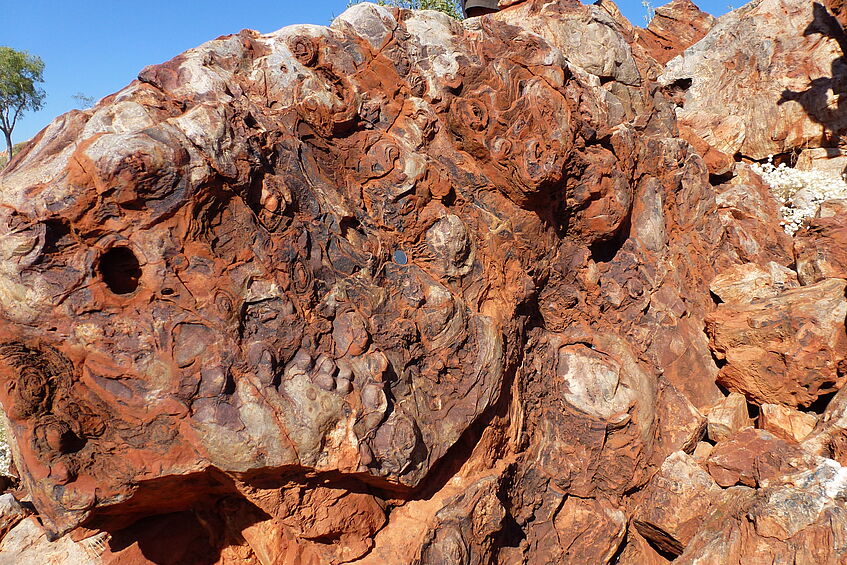
Strelley Pool Formation in the Pilbara Craton, Australia, Fig. 1 (© S. Viehmann)
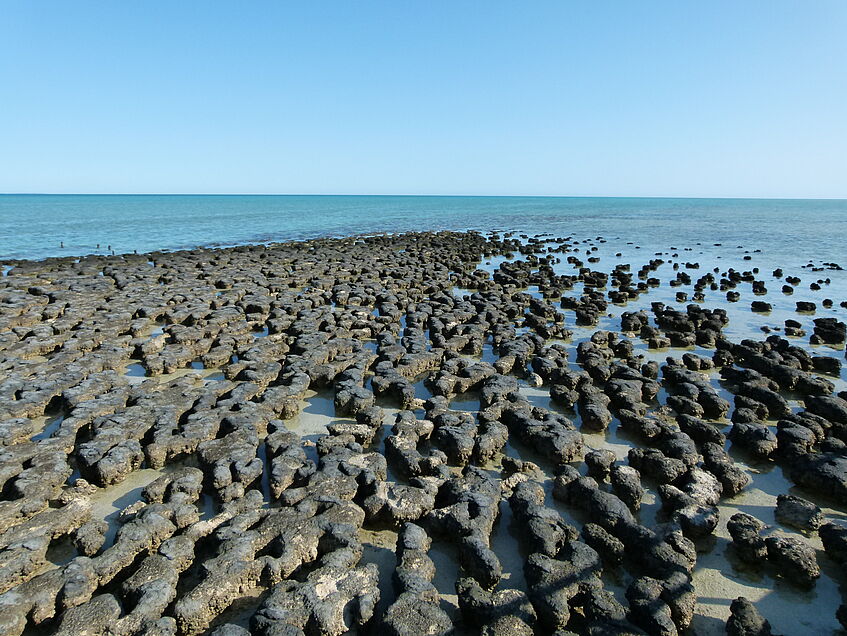
Shark Bay, Australia, Fig.2 (© S. Viehmann)
Sebastian Viehmann and his colleague provide a comprehensive review about the applications of novel, emerging, and established stable (O, C-N-S, Fe, Mo, Cr, U, Cd) and radiogenic (U-Pb, Rb-Sr, Sm-Nd) isotope applications to stromatolites, point out the potential and pitfalls of each isotope system and provide a future perspective on isotope applications for stromatolites.
In the recent volume of Geology (March, Volume 49/3, 2021) there are two papers of the Department of Geology published.
The first paper (Le Heron, Busfield, Kettler: Ice-rafted dropstones in “postglacial” Cryogenian cap carbonates) investigates dropstones from Namibia and concludes that evidence for vestigial glaciation concomitant with cap carbonate deposition merits a reappraisal of the depositional conditions of cap carbonates and their paleoclimatic significance.
The second paper (Fernandez, Habermüller, Grasemann: Hooked on salt: Rethinking Alpine tectonics in Hallstatt (Eastern Alps, Austria)) demonstrated that spectacular halokinetic sequences in Triassic platform carbonates suggest that the Hallstatt diapir grew passively during the Triassic, surrounded by carbonate platforms, and extruded to the seabed during the Jurassic.
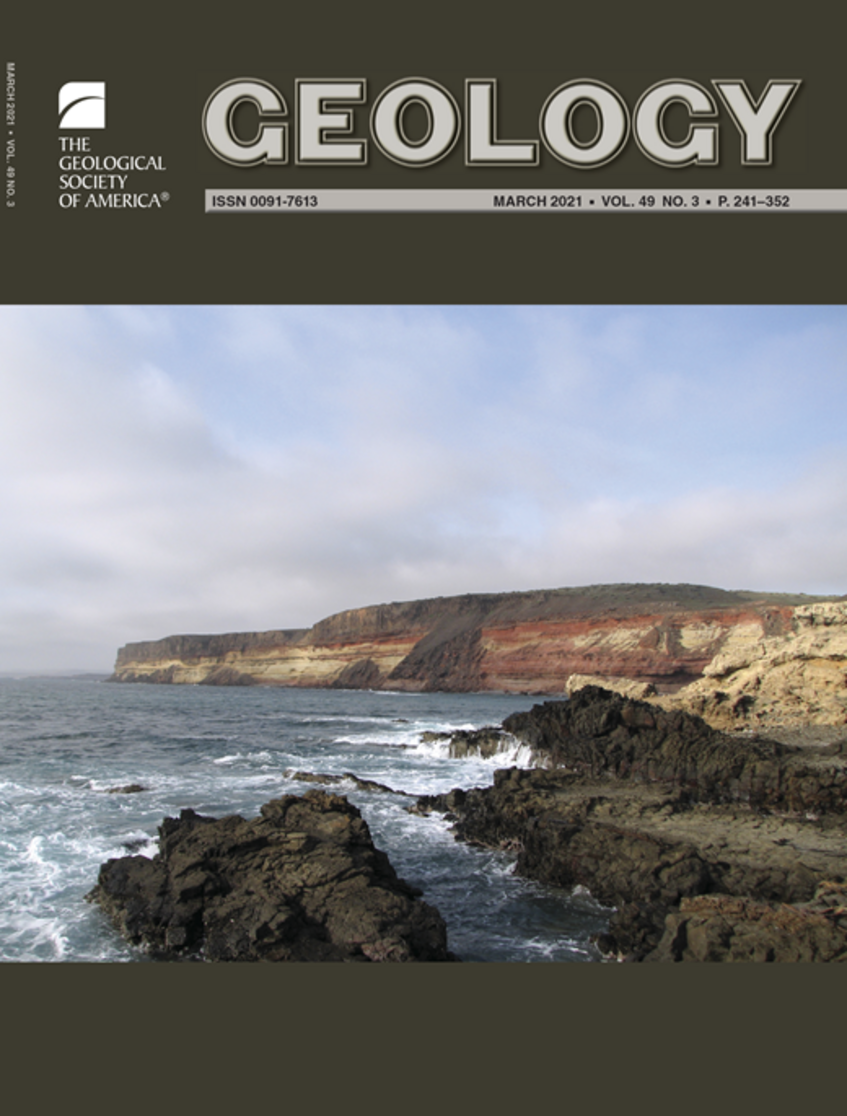
Geology (March, Volume 49/3, 2021)
Presentation
Further reading to the talk of Dr. Holger Paulick within the framework of our Earth Sciences Colloquium on January 14th, 2021.

© M. Wagreich
New blogpost of the EGU
Dating mineral phases in geological remnants of early life
Blogpost written by Sebastian Viehmann (blog of the Biogeosciences Division of the European Geosciences Union)
https://blogs.egu.eu/divisions/bg/2020/05/21/dating-mineral-phases-in-geological-remnants-of-early-life/
PDF: Dating mineral phases in geological remnants of early life
Original article: https://www.sciencedirect.com/...
Cretaceous Climate Events and Short-Term Sea-Level Changes (Kopie 1)
The final Proceedings Volume of UNESCO-IGCP 609 has been published and printed. It is entitled "Cretaceous Climate Events and Short-Term Sea-Level Changes", edited by Michael Wagreich, Malcolm Hart (Plymouth), Benjamin Sames, and Ismail O. Yilmaz (Ankara) and has been published as Volume 498 of the Geological Society, London, Special Publications. The volume comprises an Introduction/Overview (open access) and 11 articles, including two review papers (one open access) and a set of case studies.
Sea level constitutes a critical planetary boundary for geological processes and human life. Sea-level fluctuations during major greenhouse phases are still enigmatic and strongly discussed in terms of changing climate systems. The geological record of the Cretaceous greenhouse period provides a deep-time view on greenhouse-phase Earth System processes that facilitates a much better understanding of the causes and consequences of global, geologically short-term, sea-level changes. Especially Cretaceous hothouse periods can serve as laboratory to better understand a near-future greenhouse Earth. This volume presents high-resolution sea-level records from globally distributed sedimentary archives of the Cretaceous involving a large group of scientists from the International Geoscience Programme IGCP 609. Marine to non-marine sedimentary successions were analysed for revised age constraints, correlation of global palaeoclimate shifts and sea-level changes, tested for climate-driven cyclicities,and correlated within a high-resolution stratigraphic framework of the Geological Timescale. For hothouse periods, the hypothesis of significant global groundwater-related sea-level change, i.e. aquifer-eustasy as major process, is reviewed and substantiated.
Link: sp.lyellcollection.org/content/498/1
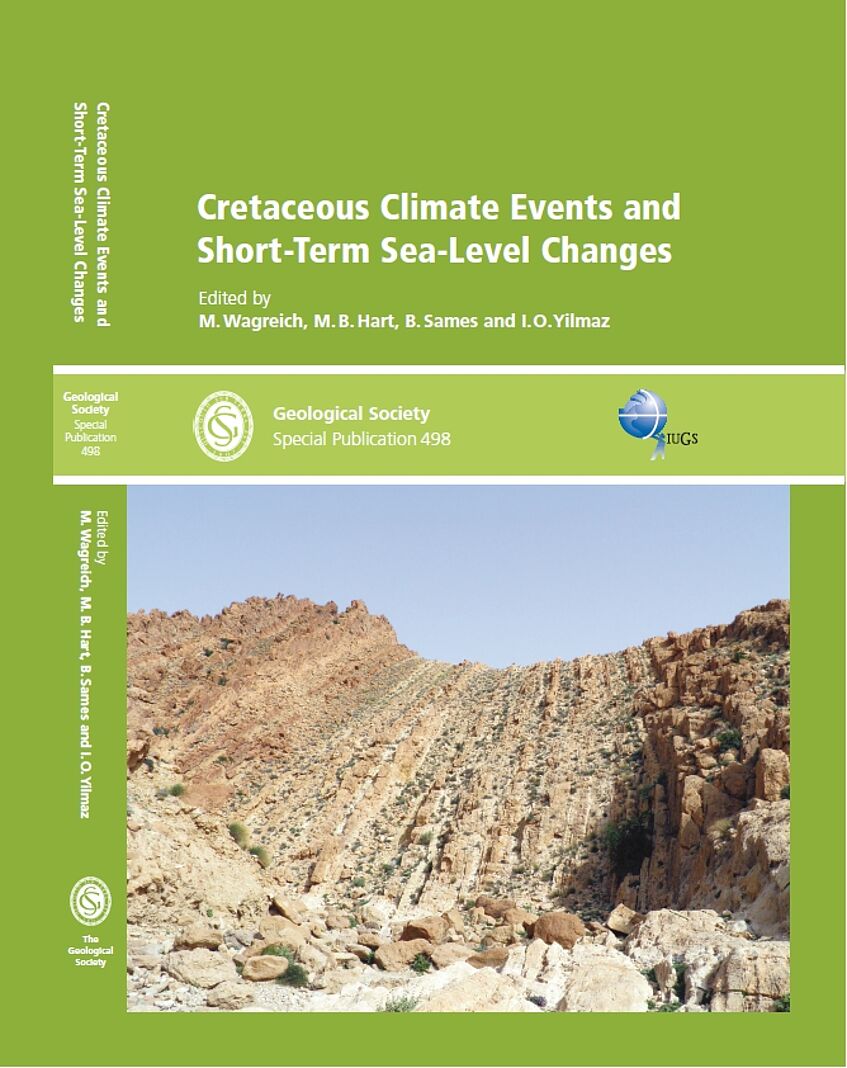
Object of the Month (The Collections at Vienna University)
The new Object of the Month April 2020 is from the Geological Archive of the Department of Geology:
(Link: https://bibliothek.univie.ac.at/...)
The geologic overview map of the Eastern Alps by Leopold Kober is a preliminary version of his view of the tectonic architecture of the Alps and the Dinarides, which was strongly influenced by the early ideas of nappe tectonics.
A strongly modified version of this map was later published in KOBER, L. (1938). Der Geologische Aufbau Österreichs. Wien, Julius Springer: 204 pp.
New YouTube Lecture by Bernhard Grasemann and Marcin Dabrowski
This lecture was part of a three-day workshop organized under by the IUGS commission on Tectonics & Structural Geology (TecTask) at the Indian Institute of Technology (IIT) Kharagpur from 26-28 February 2020.
The topic of the workshop was “STRUCTURAL GEOLOGY IN THE 21st CENTURY”
(Link: https://erp.iitkgp.ac.in/CEP/getbrochure.htm?course_code=3263).
The lecture (Mis-)interpretations of kinematic indicators demonstrates with many natural examples and numerical models the danger of the interpretation of monoclinic symmetries, without considering the influence of mechanical of perturbations during deformation.
(Link: https://www.youtube.com/watch?v=-HWL--cOT5w).
New Springer book co-edited by Bernhard Grasemann
Structural Geometry of Mobile Belts of the Indian Subcontinent
Editors: Biswal, Tapas Kumar; Ray, Sumit Kumar; Grasemann, Bernhard
This book is part of the “Society of Earth Scientists Series” of Springer and was edited in the frame of the 36th International Geological Congress in Delhi rescheduled for the 9-14 November, 2020.
The book summarizes with 11 individual research papers the latest research on the structural geology of the mobile belts of the Indian subcontinent including the Himalayas, NE Himalayas, Bangladesh thrust belt, Andaman subduction zone, the Aravalli‐Delhi, the Central India Tectonic Zone, the Singhbhum, the Eastern Ghats and the Southern granulite terrane.
Best Paper Award in "Geosciences"
The review paper by Meister and Reyes (2019) on "The carbon-isotope record of the sub-seafloor biosphere" received the MDPI Geosciences best-paper award.
This interdisciplinary review paper summarizes the processes that lead to the formation of carbon isotope archives of past sub-seafloor biospheres. The paper demonstrates that these records are the result of a range of different factors, including isotope effects of microbial biochemical pathways, porefluid chemistry, transport processes, and diagenetic carbonate precipitation.
Variations in carbon isotope signatures are found preserved in diagenetic carbonate records, documenting that microbial activity below the seafloor is not static, but changed over time in response to environmental conditions at the Earth’s surface.
Meister, P. and Reyes, C. (2019) The carbon-isotope record of the sub-seafloor biosphere. In: "Tracking the Deep Biosphere through Time" (Eds. H. Drake, M. Ivarsson, C. Heim), Geosciences 9, 507, 1-25. https://doi:10.3390/geosciences9120507
New book from the Department of Geodynamics and Sedimentology
Dan Le Heron and colleagues have just published a new book entitled "Glaciated Margins: the Sedimentary and Geophysical Archive" under the flagship Special Publications series of the Geological Society of London.
This book arose out of a major international conference in 2016 held in Burlington House, London, and brings together contributions from deep time (Cryogenian, Ordovician, Carboniferous-Permian) and more recent (Pleistocene, Modern) in one tome, exploring the general traits of glaciated margins, including rifted margins where the signal of the glacial record becomes somewhat diluted. Collectively surveying marine geophysical datasets through to outcrop data, the broad scope of the book showcases the exciting aspects of Glaciated Margins Science across geological time.
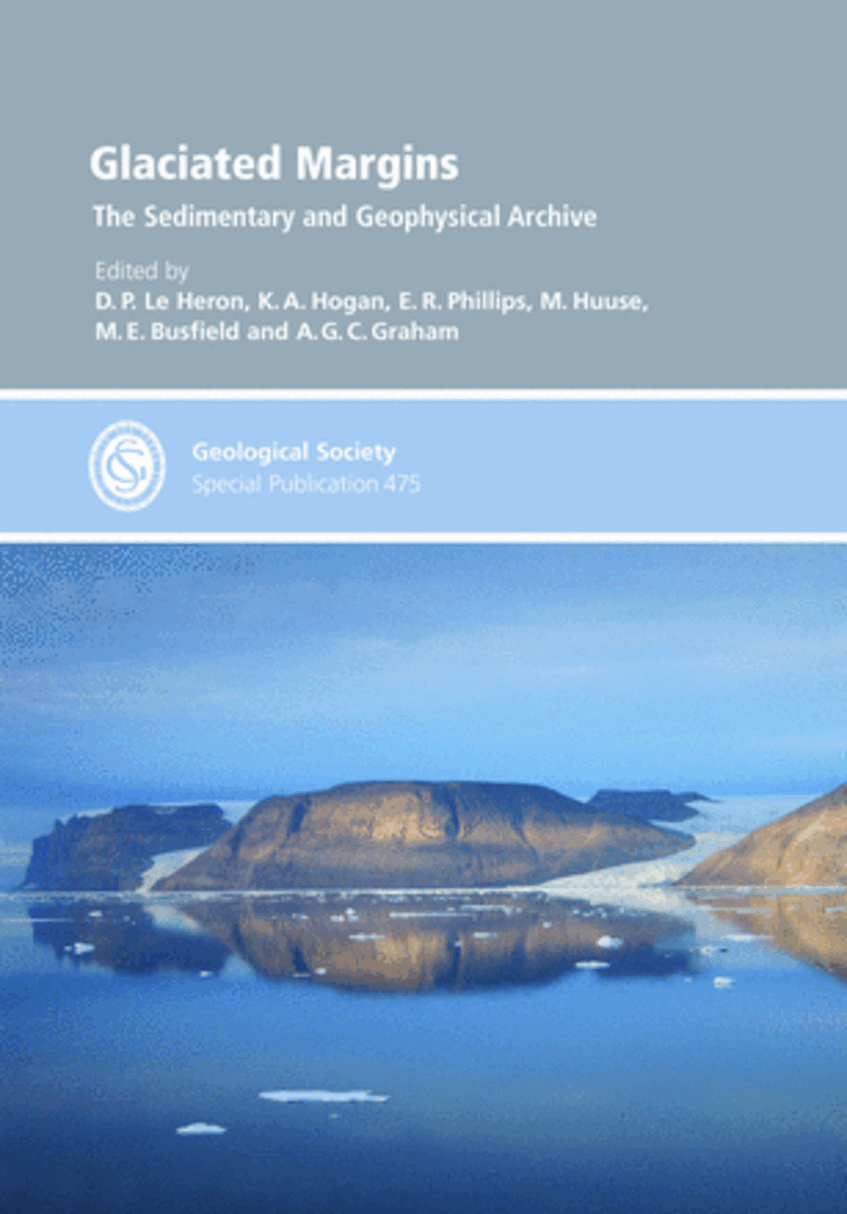
New Publication in "Economic Geology"
Tschegg, C., A. H. N. Rice, B. Grasemann, E. Matiasek, P. Kobulej, M. Dzivák, and T. Berger (2019)
Petrogenesis of a Large-Scale Miocene Zeolite Tuff in the Eastern Slovak Republic: The Nižný Hrabovec Open-Pit Clinoptilolite Mine, Economic Geology, 114(6), 1177-1194.
Over 170,000 metric tonnes of high-grade clinoptilolite tuff were extracted from the open-pit mine in Nižný Hrabovec (eastern Slovak Republic) in 2018, making it one of the world’s major natural clinoptilolite producers.
The mine is hosted in a Miocene volcanogenic-sedimentary deposit in the East Slovak basin, with estimated 150 million tonnes of clinoptilolite tuff—the economically most important reserve in the European Union.
This work as part of the collaboration between the Department of Geodynamics and Sedimentology (University of Vienna) and Glock Health, Science and Research GmbH investigates the magma source, crustal contributions, deposition environment and postdepositional geochemical changes of this important clinoptilolite tuff deposits.

Figure 1 of this paper has been selected as cover page of this issue of Economic Geology.
New Publication in "Tectonophysics"
Present-day kinematic behavior of active faults in the Eastern Alps
Baroň, I., Plan, L., Sokol, L., Grasemann, B., Melichar, R., Mitrovic, I., Stemberk, J., 2019. Present-day kinematic behaviour of active faults in the Eastern Alps. Tectonophysics 752, 1-23.
We monitored fault systems in caves in the Eastern Alps over a 1.5–2.5-year observation period by means of high-resolution three-dimensional Moiré extensometers TM71.
The annual displacement rates of the monitored faults were mostly about an order of magnitude smaller than the rates of the entire crustal wedges revealed from GNSS.
The displacements could be attributed to various processes: Dilations and compressions were mostly associated with thermal-volumetric variations.
Normal dip-slips originated due to gravitational relaxation.
Displacements with the same kinematics as the geologically documented fault systems were attributed to tectonic creep and strain built-up during the inter-seismic period.
Opposing kinematics on these faults were usually recorded few days in advance to local earthquakes.
Therefore real-time of such displacements could be a step forward to an effective earthquake early warning.
New Article
Le Heron, D.P. and Vandyk, T.M. 2019. A Slippery Slope or Cryogenian Diamictites? The Depositional Record, DOI: 10.1002/dep2.67
How "glacial" really are ancient glacial deposits? Building on previous work that the published recently in Geology, Le Heron and Vandyk show that some of the famous, so-called "glacial" deposits of Death Valley, though to belong to the Marinoan (younger Cryogenian, ca. 650 Ma) global glaciation are unrelated to glaciation at all.
The study substantiates previous work by the likes of Jessica Creveling and colleagues, who emphasised the importance of platform instability and slope collapse. It really is important to not assume that diamictites- jumbled up deposits with large blocks and boulders inside- are glacial, without looking carefully first!
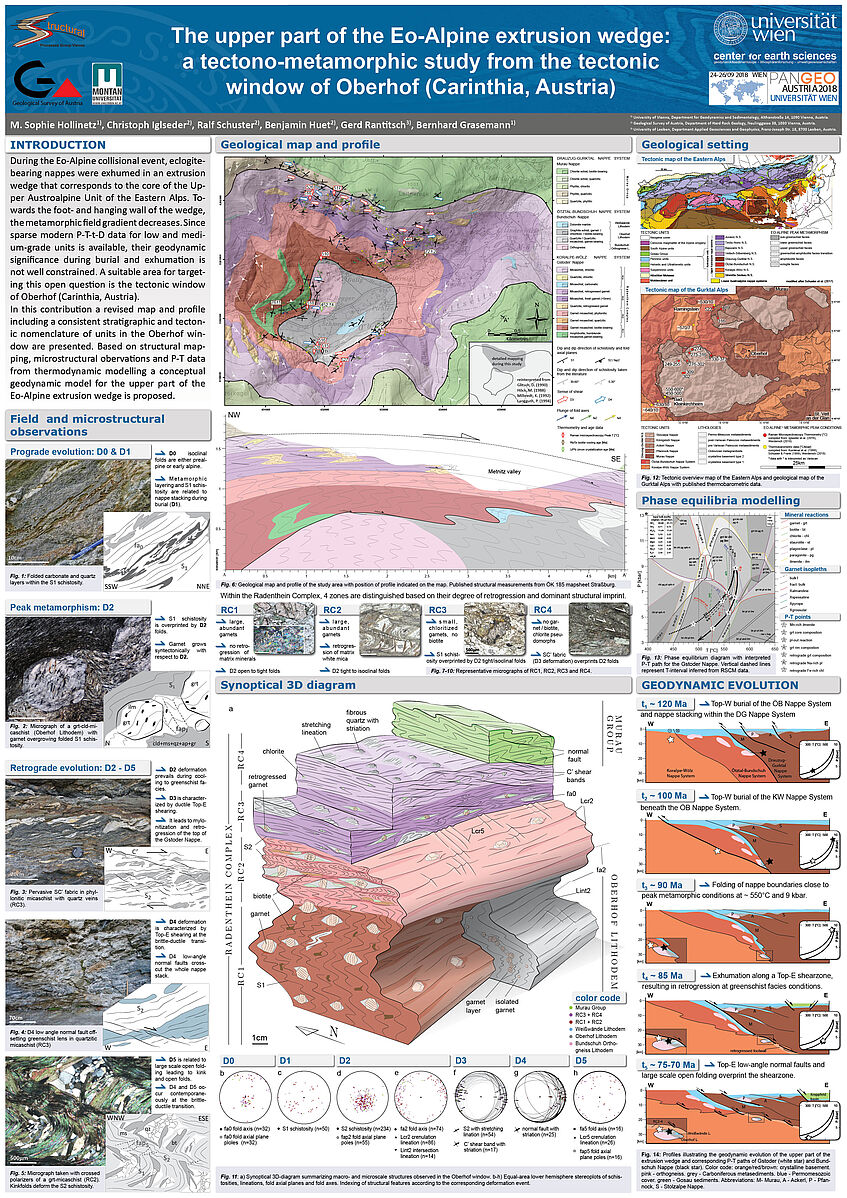
Poster "The upper part of the Eo-Alpine extrusion wedge: a tectono-metamorphic study from the tectonic window of Oberhof (Carinthia, Austria) (© S. Hollinetz)
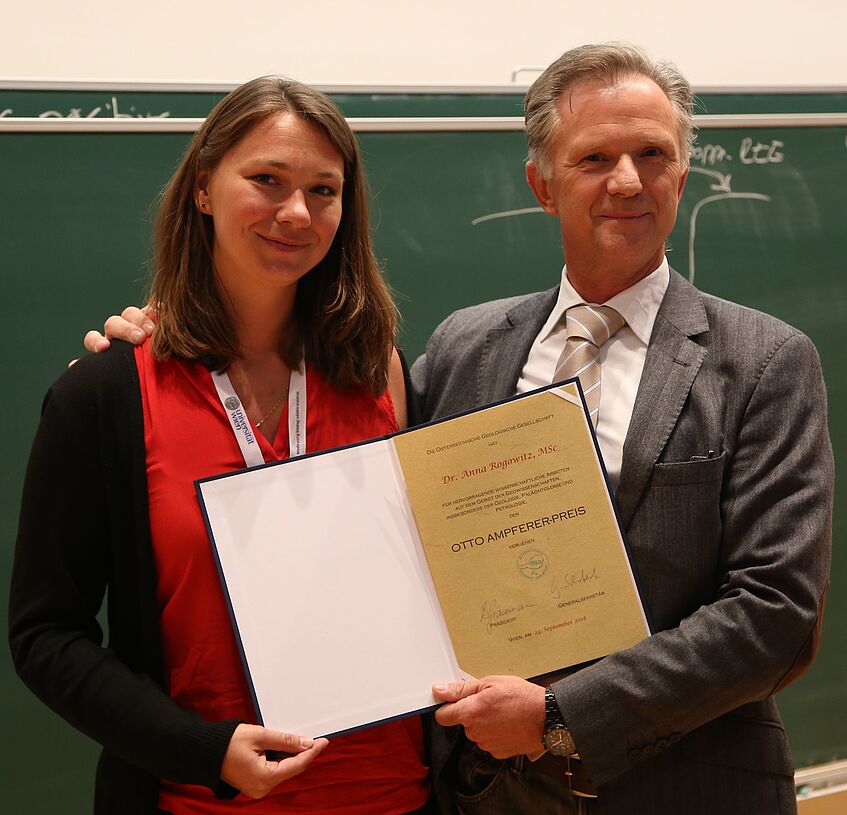
The Otto Ampferer-Preis - Anna Rogowitz and Bernhard Grasemann (© B. Grasemann)

